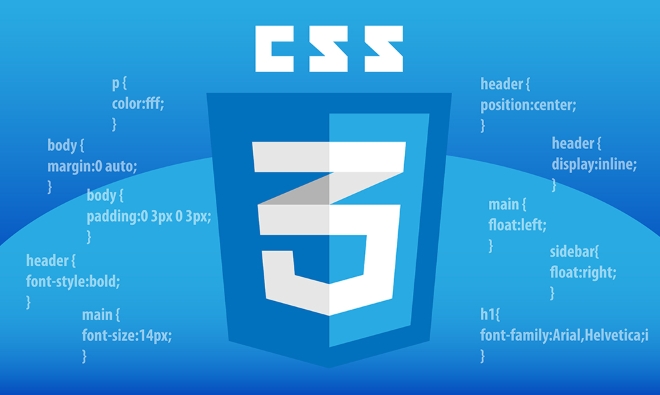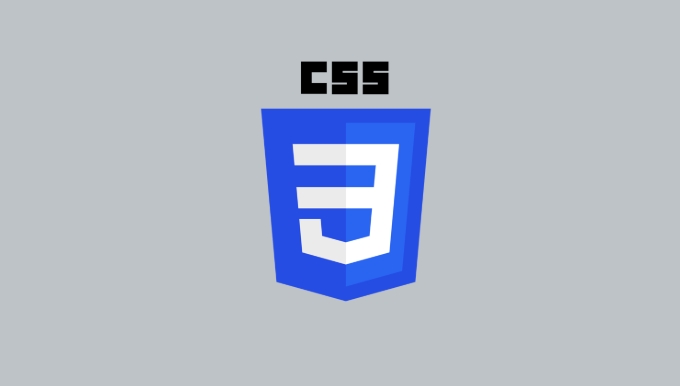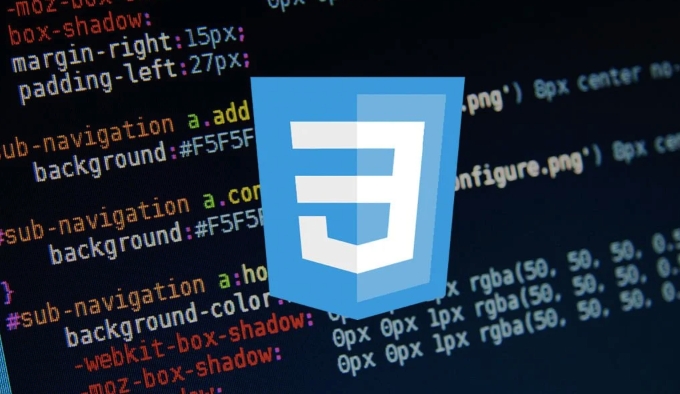 Web Front-end
Web Front-end
 CSS Tutorial
CSS Tutorial
 What are the best practices for overriding styles and managing specificity in CSS Selectors?
What are the best practices for overriding styles and managing specificity in CSS Selectors?
What are the best practices for overriding styles and managing specificity in CSS Selectors?
Jun 27, 2025 am 01:07 AMUnderstanding and rationally utilizing the weighting mechanism of selectors is the key to solving the CSS style coverage problem, rather than relying on !important or inline styles. 1. Specificity consists of four types of weights, including ID, class/attribute/pseudo-class, element/pseudo-element selector, etc., and these weights determine the final style rules; 2. Use BEM naming specifications to reduce specific conflicts caused by nesting and improve maintainability; 3. Reasonably organize hierarchical structures, avoid deep nesting, and give priority to using a single class name to define styles; 4. Modern CSS provides @layer and :where() tools to more finely control the cascade order, help alleviate the style confusion problem in large projects.

In CSS development, overwriting styles and handling selector specificity are common challenges. You may encounter situations where you write a bunch of styles but don't work, and the problem is often the priority of the selector. The key to solving this problem is to understand and rationally utilize the weight mechanism of the selector, rather than just forcibly covering it with !important or inline styles.

Understand the specific rules of CSS selectors
Each selector in CSS has a calculated "specific value", and the browser will decide which style rule will eventually take effect based on this value. Specificity consists of four types of weights: !important , inline style, ID selector, class/attribute/pseudo-class selector, element/pseudo-element selector.

For example:
/* Specificity is 0,1,0 */
div {
color: red;
}
/* Specificity is 0,1,1 */
.container p {
color: blue;
} In the example above, .container p has higher specificity, so the paragraph text color will be blue. Understanding these rules helps us write more controllable styles and avoid unnecessary conflicts.

Use BEM or similar naming methods to reduce complexity
Using naming specifications like BEM (Block Element Modifier) ??can help you write class names with clear structure and strong maintenance, and reduce specific problems caused by nesting.
for example:
<div class="card"> <div class="card__title">Title</div> <div class="card__content card__content--highlighted">Content</div> </div>
This naming method keeps relatively independent between classes, reducing nested selectors that rely on parent structures, thereby reducing the probability of style conflicts and making it easier to overwrite styles.
Reasonably organize CSS hierarchy to avoid excessive nesting
Sometimes we habitually write selectors like .sidebar ul li a , but this type of deeply nested selector not only increases specificity, but may also make it difficult to cover later.
Suggested practices include:
- Try to use a single class name to define styles
- Avoid nesting above three layers (especially in preprocessors such as SCSS)
- Manage common styles and component styles separately, such as CSS-in-JS or modular CSS
If you really need to raise the priority of a certain style, consider copying the original selector and expanding it appropriately instead of simply adding !important .
Use cascading order tools when necessary, such as @layer and :where()
Modern CSS provides some new features to help us better control the order of cascade:
-
@layerallows you to define style sheets at different levels and control the priority between them. -
:where()is a zero-specific selector suitable for reset or default style settings.
Example:
:where(.button) {
padding: 10px;
}
/* Specificity is 0,0,1, but it is equivalent to 0,0,0 in actual application */Although these tools are not necessary, they can effectively alleviate the confusion caused by style coverage in large projects.
Basically that's it. Covering styles is not a master skill, but to do it neatly, you need to have a clear understanding of the weight of the selector and work hard on project structure and naming strategies.
The above is the detailed content of What are the best practices for overriding styles and managing specificity in CSS Selectors?. For more information, please follow other related articles on the PHP Chinese website!

Hot AI Tools

Undress AI Tool
Undress images for free

Undresser.AI Undress
AI-powered app for creating realistic nude photos

AI Clothes Remover
Online AI tool for removing clothes from photos.

Clothoff.io
AI clothes remover

Video Face Swap
Swap faces in any video effortlessly with our completely free AI face swap tool!

Hot Article

Hot Tools

Notepad++7.3.1
Easy-to-use and free code editor

SublimeText3 Chinese version
Chinese version, very easy to use

Zend Studio 13.0.1
Powerful PHP integrated development environment

Dreamweaver CS6
Visual web development tools

SublimeText3 Mac version
God-level code editing software (SublimeText3)

Hot Topics
 What is 'render-blocking CSS'?
Jun 24, 2025 am 12:42 AM
What is 'render-blocking CSS'?
Jun 24, 2025 am 12:42 AM
CSS blocks page rendering because browsers view inline and external CSS as key resources by default, especially with imported stylesheets, header large amounts of inline CSS, and unoptimized media query styles. 1. Extract critical CSS and embed it into HTML; 2. Delay loading non-critical CSS through JavaScript; 3. Use media attributes to optimize loading such as print styles; 4. Compress and merge CSS to reduce requests. It is recommended to use tools to extract key CSS, combine rel="preload" asynchronous loading, and use media delayed loading reasonably to avoid excessive splitting and complex script control.
 External vs. Internal CSS: What's the Best Approach?
Jun 20, 2025 am 12:45 AM
External vs. Internal CSS: What's the Best Approach?
Jun 20, 2025 am 12:45 AM
ThebestapproachforCSSdependsontheproject'sspecificneeds.Forlargerprojects,externalCSSisbetterduetomaintainabilityandreusability;forsmallerprojectsorsingle-pageapplications,internalCSSmightbemoresuitable.It'scrucialtobalanceprojectsize,performanceneed
 Does my CSS must be on lower case?
Jun 19, 2025 am 12:29 AM
Does my CSS must be on lower case?
Jun 19, 2025 am 12:29 AM
No,CSSdoesnothavetobeinlowercase.However,usinglowercaseisrecommendedfor:1)Consistencyandreadability,2)Avoidingerrorsinrelatedtechnologies,3)Potentialperformancebenefits,and4)Improvedcollaborationwithinteams.
 CSS Case Sensitivity: Understanding What Matters
Jun 20, 2025 am 12:09 AM
CSS Case Sensitivity: Understanding What Matters
Jun 20, 2025 am 12:09 AM
CSSismostlycase-insensitive,butURLsandfontfamilynamesarecase-sensitive.1)Propertiesandvalueslikecolor:red;arenotcase-sensitive.2)URLsmustmatchtheserver'scase,e.g.,/images/Logo.png.3)Fontfamilynameslike'OpenSans'mustbeexact.
 What is Autoprefixer and how does it work?
Jul 02, 2025 am 01:15 AM
What is Autoprefixer and how does it work?
Jul 02, 2025 am 01:15 AM
Autoprefixer is a tool that automatically adds vendor prefixes to CSS attributes based on the target browser scope. 1. It solves the problem of manually maintaining prefixes with errors; 2. Work through the PostCSS plug-in form, parse CSS, analyze attributes that need to be prefixed, and generate code according to configuration; 3. The usage steps include installing plug-ins, setting browserslist, and enabling them in the build process; 4. Notes include not manually adding prefixes, keeping configuration updates, prefixes not all attributes, and it is recommended to use them with the preprocessor.
 What are CSS counters?
Jun 19, 2025 am 12:34 AM
What are CSS counters?
Jun 19, 2025 am 12:34 AM
CSScounterscanautomaticallynumbersectionsandlists.1)Usecounter-resettoinitialize,counter-incrementtoincrease,andcounter()orcounters()todisplayvalues.2)CombinewithJavaScriptfordynamiccontenttoensureaccurateupdates.
 CSS: When Does Case Matter (and When Doesn't)?
Jun 19, 2025 am 12:27 AM
CSS: When Does Case Matter (and When Doesn't)?
Jun 19, 2025 am 12:27 AM
In CSS, selector and attribute names are case-sensitive, while values, named colors, URLs, and custom attributes are case-sensitive. 1. The selector and attribute names are case-insensitive, such as background-color and background-Color are the same. 2. The hexadecimal color in the value is case-sensitive, but the named color is case-sensitive, such as red and Red is invalid. 3. URLs are case sensitive and may cause file loading problems. 4. Custom properties (variables) are case sensitive, and you need to pay attention to the consistency of case when using them.
 What is the conic-gradient() function?
Jul 01, 2025 am 01:16 AM
What is the conic-gradient() function?
Jul 01, 2025 am 01:16 AM
Theconic-gradient()functioninCSScreatescirculargradientsthatrotatecolorstopsaroundacentralpoint.1.Itisidealforpiecharts,progressindicators,colorwheels,anddecorativebackgrounds.2.Itworksbydefiningcolorstopsatspecificangles,optionallystartingfromadefin





